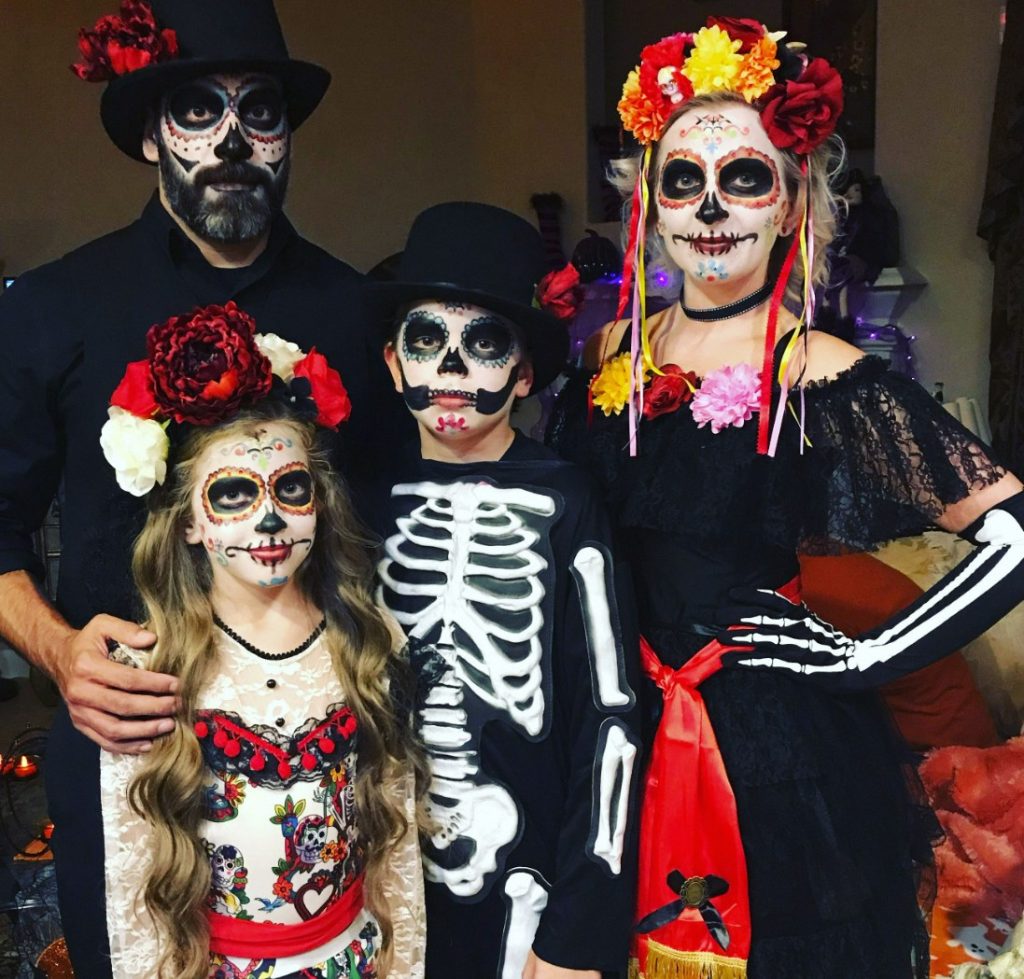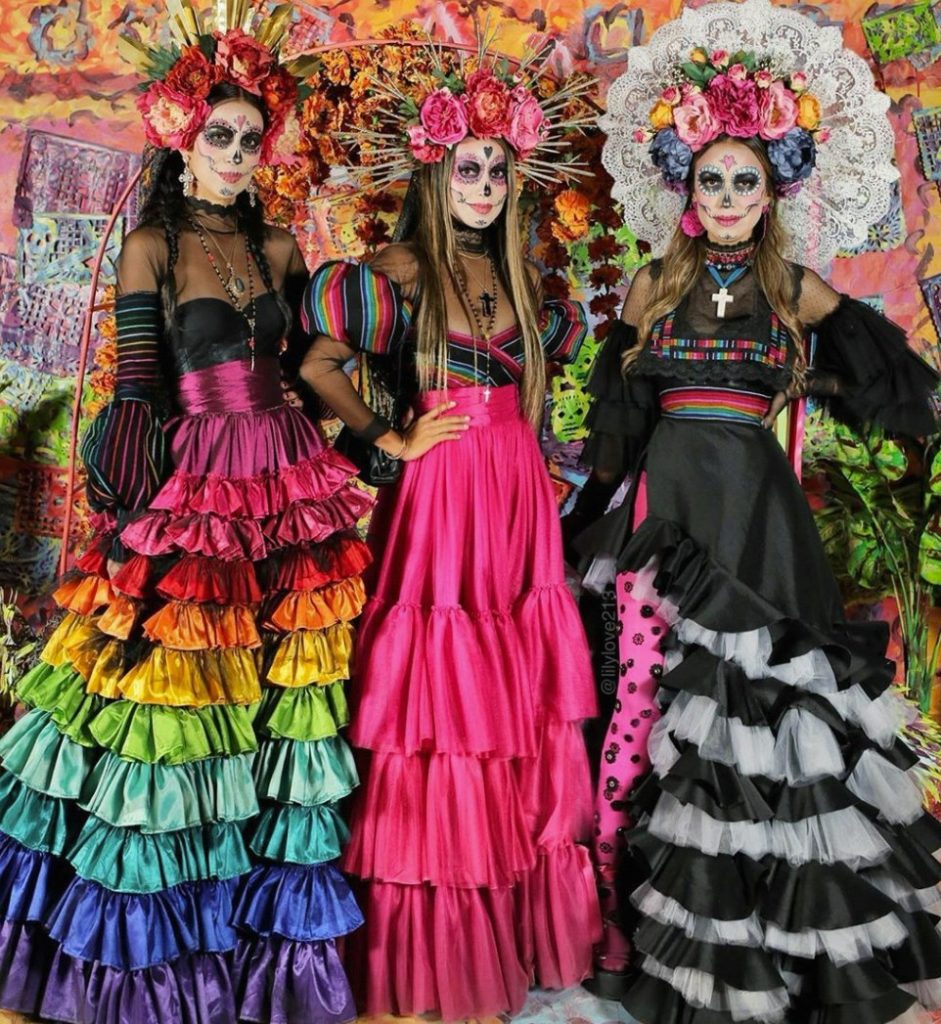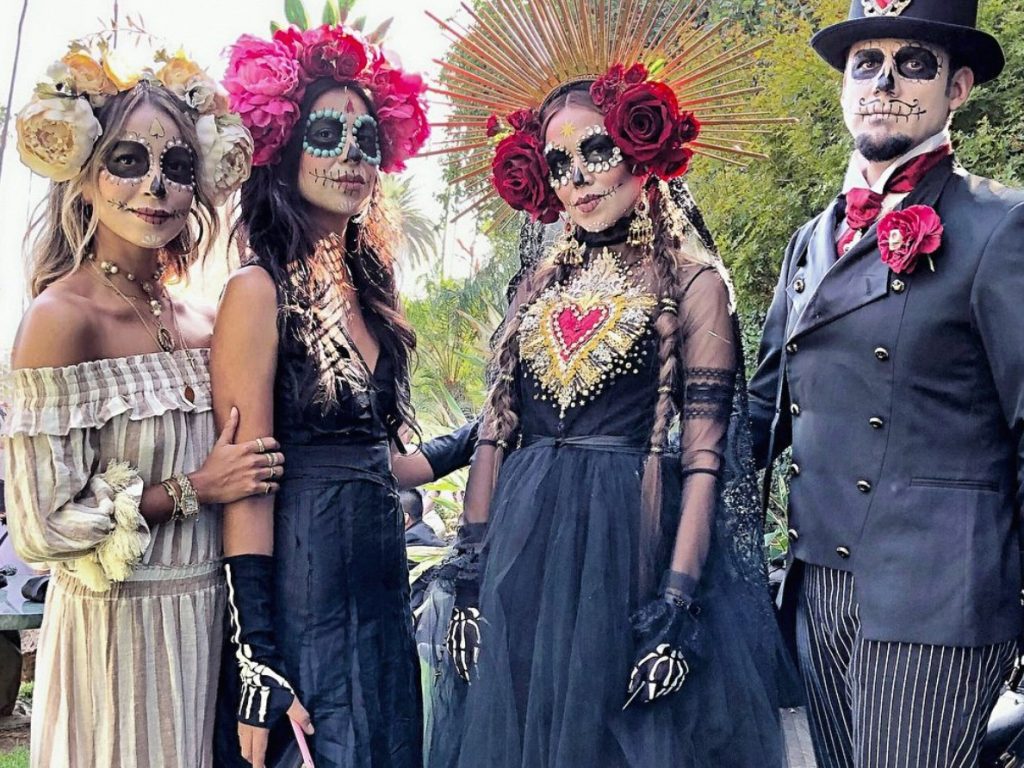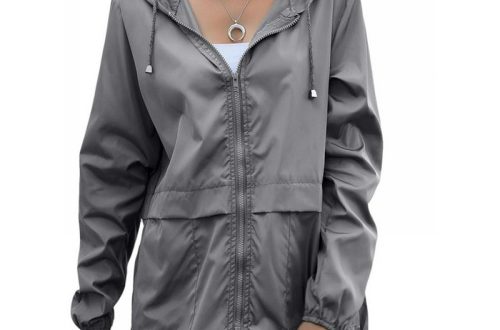Día de Muertos, the Day of the Dead, is a vibrant Mexican holiday bursting with color, delectable food offerings, and a unique celebration of life after death. One of the most visually striking aspects of the holiday is the attire worn by participants. However, unlike Halloween costumes, Día de los Muertos dress-up is rooted in tradition and symbolism. This article delves into the art of authentic Día de los Muertos attire, exploring traditional clothing choices, understanding the cultural significance behind the adornments, and offering respectful ways to participate in the festivities.
Part 1: Beyond Stereotypes: Unveiling the Essence of Traditional Dress

1. Vibrant Attire and Symbolic Elements: Colors that Reflect Life
Traditional Día de Muertos attire embodies a joyous spirit. Women often wear long, flowing dresses in rich hues like purple, yellow, or orange, often adorned with intricate embroidery depicting flowers, butterflies, or even playful skulls. These vibrant colors represent the joy of life and the ongoing connection with deceased loved ones. Men might wear traditional guayaberas, lightweight shirts with short collars and pockets, in equally bright colors.
2. Face Paint as a Canvas: Sugar Skulls and Floral Designs
Face paint is an integral part of Día de Muertos attire, serving as a means to transform faces into vibrant canvases that tell stories. Among the popular choices are sugar skull designs, which symbolically remind us of the inevitability of death. Despite this symbolism, these designs are often rendered in bright colors and adorned with flowers, creating a sense of celebration rather than evoking fear. Additionally, delicate floral patterns and intricate butterfly motifs are also commonly used in the face paint, alluding to the beauty and fragility of life. These designs, when carefully applied, add a layer of meaningful symbolism and artistic expression. They serve as a unique way to pay homage to departed loved ones and emphasize the joyous celebration of life inherent in the Día de Muertos tradition. The use of face paint thus becomes a poignant and visually striking aspect of this rich cultural celebration.

Part 2: Avoiding Appropriation: Dressing with Respect for Cultural Traditions
1. Understanding the Symbolism: Respecting the Meaning Behind the Attire
Unlike Halloween costumes, the attire worn during Día de Muertos holds deep cultural significance. The vibrant colors and meticulously painted designs of the clothing carry symbolic meanings that are important to understand. People should approach the attire with reverence and respect for the tradition. Seeing it purely for its visual appeal without understanding its cultural significance can be viewed as disrespectful appropriation. It’s essential to recognize that Día de Muertos attire is not just a costume, but a way to honor and connect with deceased loved ones while celebrating their lives. By learning about and appreciating the deeper meaning behind the clothing, individuals can foster a greater understanding and respect for this rich cultural tradition.
2. Respectful Participation: Honoring Traditions Rather Than Mimicking
For those not of Mexican descent, dressing up in stereotypical costumes with sombreros and face paint can be insensitive. Instead, consider more respectful ways to participate in the festivities. You could volunteer at local altars (ofrendas), create your own altar to honor deceased loved ones (regardless of ethnicity), or simply learn more about the traditions and share your appreciation with others.

Part 3: A Celebration of Life and Legacy: The Meaning Behind Traditional Attire
1. Remembering Loved Ones: Wearing Clothing Associated with the Deceased
Día de Muertos attire encompasses a heartwarming tradition where families incorporate the clothing of their deceased loved ones. This beautiful tradition may involve wearing a departed grandparent’s favorite shirt or donning attire that echoes the cultural heritage of a beloved ancestor. Families not only pay homage to their ancestors but also keep their memory alive through the clothing they wear. This act serves as a touching and meaningful way to honor and celebrate the lives of those who have passed on. By donning the clothing associated with their loved ones, individuals can feel a strong sense of connection. They continue the tradition of remembering and commemorating their family’s heritage and history. This unique form of homage and remembrance through attire contributes to the profound depth and significance of the Día de Muertos celebration.
2. Handmade Crafts: Personal Touches and Family Traditions
Many families create their own unique attire for Día de Muertos, incorporating handmade elements and personalized touches. This could involve embroidering vibrant flowers on dresses, creating elaborate headpieces adorned with colorful feathers, or designing unique face paint patterns that hold special meaning within the family. This personalization reflects the special bond between families and their deceased loved ones.

Part 4: Celebrating the Beauty of Día de los Muertos: Appreciation Through Education
1. A Celebration of Life and Legacy: Looking Beyond the Skeletons
While the vibrant attire and skull imagery are visually striking and are often the focus of attention, they are just one aspect of the rich and multifaceted cultural tradition of Día de Muertos. This holiday is a celebration of life, filled with love and remembrance for those who have passed away. It is a time to honor and cherish the memories of deceased loved ones and celebrate their lives. By focusing solely on the costumes and imagery, there is a risk of overshadowing the true essence of the holiday. The holiday is about familial bonds, cultural heritage, and the significance of honoring and remembering those who have passed on. It is vital to recognize and appreciate the depth and importance of the emotional and spiritual aspects of Día de Muertos. In addition, there are the vivid and visually striking elements that often garner attention.
2. Learning and Respect: Fostering Cross-Cultural Understanding
The best way to appreciate Día de Muertos is to learn about its traditions and significance. Research the history of the holiday, explore the meaning behind the symbolic elements of the attire, and participate in respectful ways that honor the cultural heritage. This fosters a deeper understanding and appreciation for this beautiful celebration.

In conclusion, Día de los Muertos attire is not just about dressing up. It’s about honoring the memory of loved ones and celebrating the cycle of life and death. By understanding the cultural significance behind the vibrant colors, symbolic designs, and personal touches, we can appreciate the beauty of this tradition. We can also participate in respectful ways that celebrate life, legacy, and the enduring love between families and their deceased loved ones.


